GARDENING VS LANDSCAPING
While gardening and landscaping are techniques centered around plants, rocks to enhance a space, they are not the same. Gardening is the practice of growing plants outdoor, whereas landscaping is the design and construction of gardens and outdoor areas. Landscaping also requires more skills and expertise as compared to gardening.
Landscape design requires knowledge of both art and science to enrich and organize an outdoor space for both aesthetic and practical purposes. As compared to landscaping, gardening is more involved with the planting, watering, and drafting of trees. However, many landscaping companies take on gardening projects.
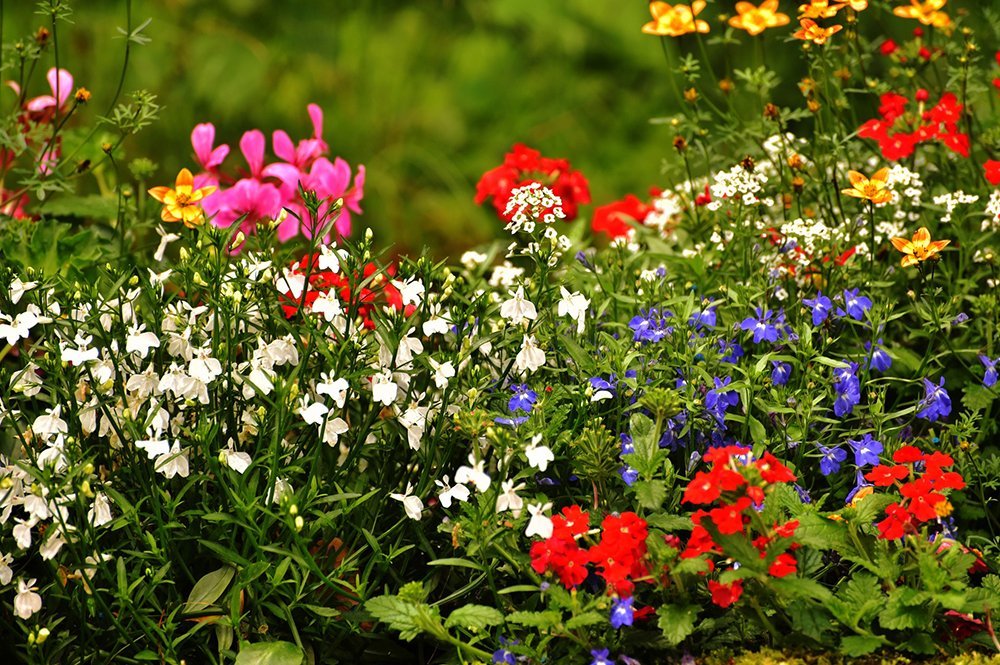 A myriad of different flowers and colours
A myriad of different flowers and colours
HISTORY OF GARDENING
Gardening was never meant to look pretty at the start of civilization. The oldest known type of horticulture is known as forest gardening. This refers to an ancient type of food gardening. Early planting was mainly used for practical reasons – to grow herbs or vegetables. Flowers were also commonly cultivated to wear for religious and medicinal purposes.
Gardens started to become a form of creative display in the 13th century. This was primarily due to the emergence of an upper class with the leisure to enjoy aesthetic looking gardens. However, despite being so, the earliest archaeological records of aesthetically designed gardens date only as far back as the 15th century in Egypt. It was based on a Thebes garden which belonged to a high court official and included the use of many plants, pieces of advice on cultivation and instructions on sowing, planting, and grafting of a tree
In the 16th century, the ideas of gardening were changed and influenced by classical approaches. Europeans began to cultivate gardens both for food and for beauty. It was at this time that lawns of grass and raised flowerbeds were used to decorate the surrounding land. The flourishing society allowed people to have increased leisure time and see gardening more than a hobby. People were earnest in their pursuit of aesthetic looking gardens. Many businesses and occupations were created and centered around horticulture. Books, journals and newspaper columns on gardening were well-received by the public. Radio and television programs had a dedicated following as well.
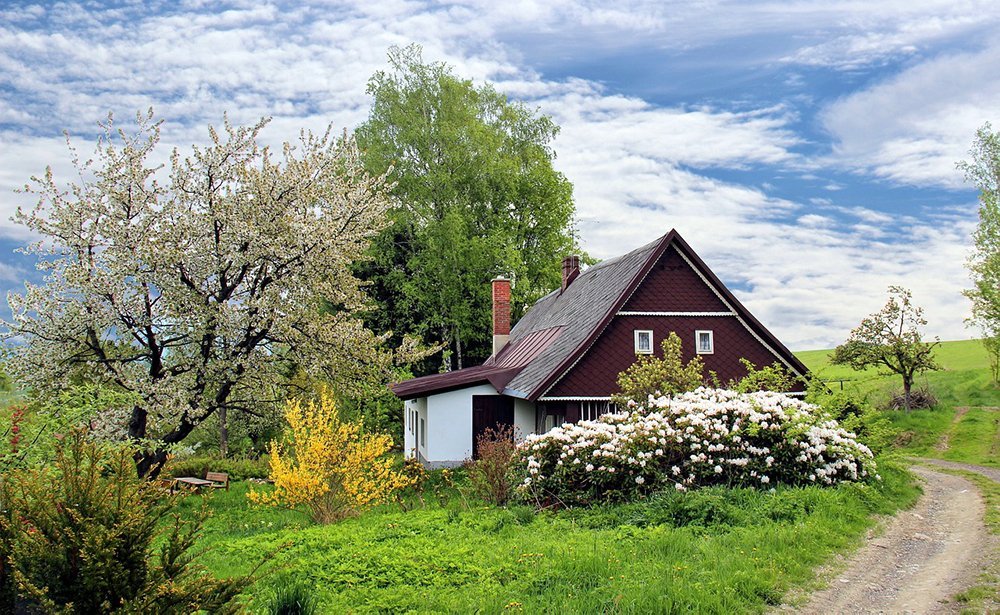 Grass lawns and flowers surrounding a single house
Grass lawns and flowers surrounding a single house
THE ROLES OF GARDENS
Rooftop gardens are becoming the next big thing in corporate social responsibility, with Chicago being the world’s largest rooftop farm. These days, many organizations’ corporate social responsibility programs commit them to green living and making the world a better place. Gardens have been known to increase the quality of lives, as a home-grown plant rewards one with a sense of accomplishment, not to mention its level of freshness and flavor having the superiority to that of store-bought vegetables.
Through the history of mankind, gardens have taken on different roles, between functional and aesthetic usage.
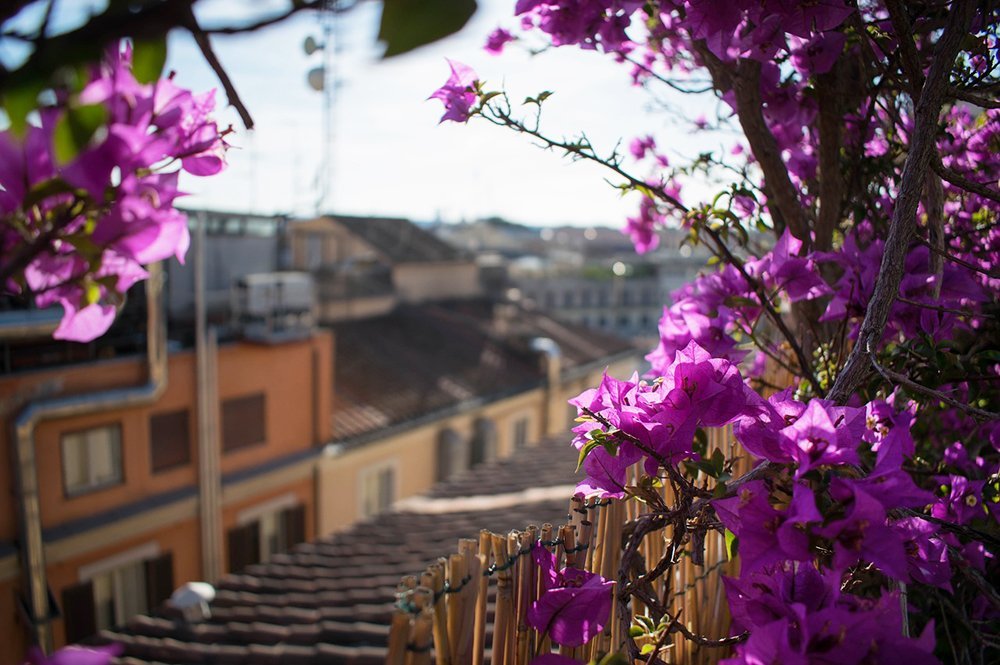 Flowers planted along the rooftop
Flowers planted along the rooftop
PLANT CULTIVATION
The etymology of the word ‘garden,’ an enclosure space, establishes the role of a garden at the beginning of mankind. Gardens were first started by farmers who needed to cultivate vegetables for a living. As plants need more watering and specialized care, its plot tends to be located near the farmers’ house. It would usually be enclosed to prevent livestock from eating the plants growing inside it.

OFFERS SHADE
Trees provide vital shade in hot and arid climates like Egypt. Back in early civilization, wealthy Egyptians planted trees in straight rows to offer shade. They usually planted a variety of species. These would include willow trees, date palms, fig-trees, pomegranate trees, and nut trees. The shadow of the trees would allow delicate plants to grow below its ample canopy. The Greeks also planted trees to provide shade around religious areas and public spaces.
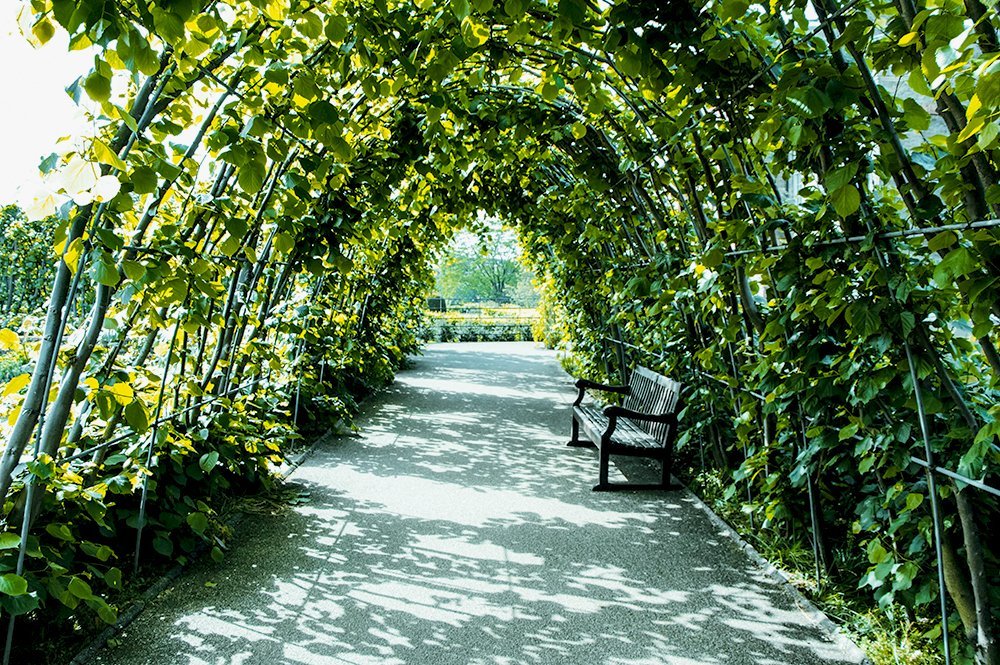 Creeper plants growing along a frame to become a shade tunnel
Creeper plants growing along a frame to become a shade tunnel
RELIGIOUS PURPOSES
The concept of a garden helped to meet spiritual needs as well. Similar to how a temple is carefully built, gardens were also constructed carefully with specific dimensions and plots. In ancient Egypt, crops and flowers were cultivated to honor the gods. There has been archaeological evidence depicting offerings of food and garden produce shown on tomb paintings. There were also sacred temple gardens consecrated for cultivating particular vegetables, plants, and herbs to offer to deities. For example, Egyptians offering home-grown produce to the God of Fertility Min.
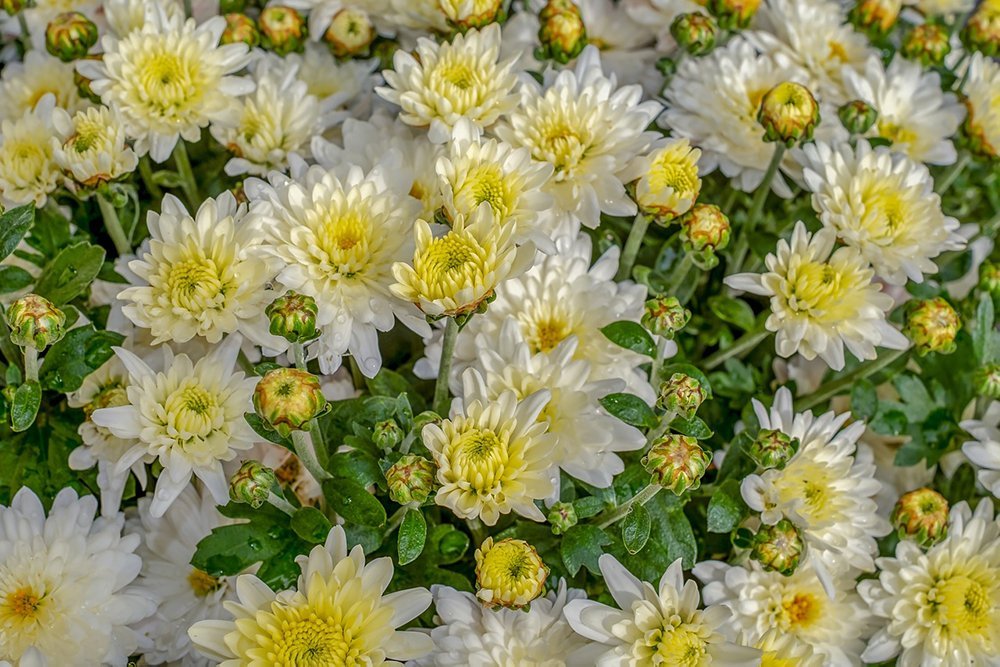
PROVIDES PRIVACY
During the 16th century, people started to build walls and raised flowerbeds around their lawns to provide seclusion. Monks grew gardens to allow them to meditate in a garden fenced off from the world. All of these gardens help to provide privacy.
REST AND RECREATIONAL
Each period in history shows us the distinct features and roles of a garden. However, gardens were clearly viewed as a rest and recreational space across most cultures in past and the present. The tedious details and maintenance work that goes into gardens to transform it into a place of rest do not go unappreciated. During the development of Roman Civilisation, ornamental horticulture was at its peak. Roman gardens were regarded as places of tranquillity, allowing one to seek refuge from the busy and noisy urban life. Even Monastery gardens had an area of turf to allow for recreational activities. These examples hold similarities to modern-day usage when gardens are used to fulfill one’s need for nature and enhance the experience of one’s surroundings.
 Pathways that are incorporated with greenery surroundings
Pathways that are incorporated with greenery surroundings
SOCIAL STATUS
Gardens can be viewed as the equivalent of one’s social status symbol. In the 16th century, gardens took the creative form of art when individuals started to have the luxury of time to manage gardens. The rich began to have an interest in horticulture and the designing of gardens. Wealthy Romans would have gardens full of flowerbeds, shaded paths, and fish ponds. The more elaborate the planning of the gardens were, the better it reflected on the social status of a family. In the modern-day context, a garden can also add curb appeal and increase the overall value of a property as well.
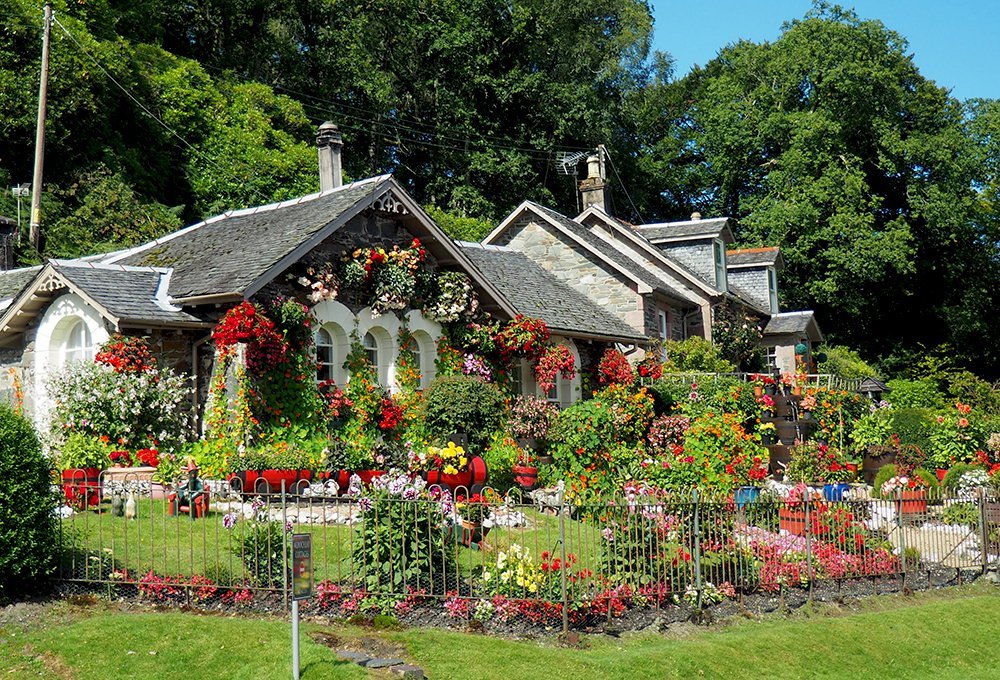 A front lawn packed with various plants and flowers
A front lawn packed with various plants and flowers
FRENCH VS ENGLISH GARDENS
Like everything else, gardens have trends as well. A pattern offers us valuable insights into how society functions. There are two schools of gardening styles that profoundly influenced horticulturists in the past – French and English gardens.
FRENCH FORMAL GREEN
Jardin à la Française (English: garden in the French manner) hugely drew its inspiration from the Italian Renaissance garden. King Charles VIII imposed it after traveling to Italy in 1495. He gathered Italian artisans and landscape designers to design a French garden after seeing how gardens could represent the ideals and virtues of a time in history.
The key features of a formal French garden would be the symmetrical and orderly arrangement. Horticulturists would plant trees in a straight line to reinforce a particular perspective and symmetry of the garden. The formal French garden helps to create a long axial view and highlight the architecture of a house or chateau. The official French gardens retain their beauty even when beheld from afar.
Plants near architect buildings are planted low whereas plants further from the buildings have paths edged with trees. Fountains and cascades are also commonly found in French Gardens. When properly designed, the reflection of water helps to reinforce the symmetry of the landscape.
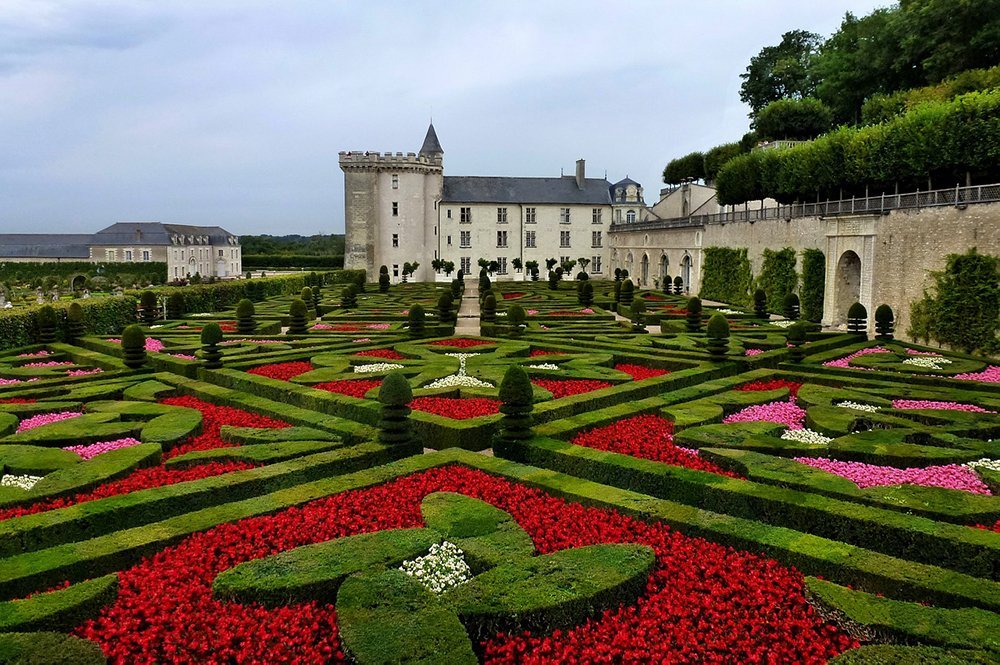 Château de Villandry, a grand country house located in Villandry, France
Château de Villandry, a grand country house located in Villandry, France
The most famous example of the French gardening style would be the Gardens of Versailles constructed by landscape architect André Le Nôtre in the 17th century. The Garden of Versailles covered 150,000 hectares of land and was crowned as the most significant garden in Europe. It showed how peace and order came through man ruling over nature. This style of garden was widely duplicated throughout the courts in Europe in the 16th century.
Unlike the formal French gardens, the Italian Renaissance gardens did not highlight or integrate the gardens with the architecture of houses or chateaus. It had a difference in regarding its spirit and appearance. Walls enclosed Italian Renaissance gardens, and different parts of the gardens were often not harmoniously joined together.
 Gardens of Versailles in the Place d'Armes, France
Gardens of Versailles in the Place d'Armes, France
ENGLISH LANDSCAPE GARDEN
In 1718, an English Garden designer Stephen Switzer wrote in his biography Ichnografia Rustica that a garden is, “open to all View, to the unbounded Felicities of distant Prospect, and the expansive Volumes of Nature herself.” It examined the costs and expenses of a formal garden and called forth a better alternative to gardening, which was better for individuals and society. This ultimately transformed the gardens of England as many started to appreciate the more natural and relaxed idea of gardening.
It was only until the 18th century when the English Landscape gardens became very popular and replaced the Formal French garden. The onset of the Civil War also halted the expensive practices and preservation of formal gardens. It was also at this point in history where science, philosophy, and gardening intersected in an unprecedented way.
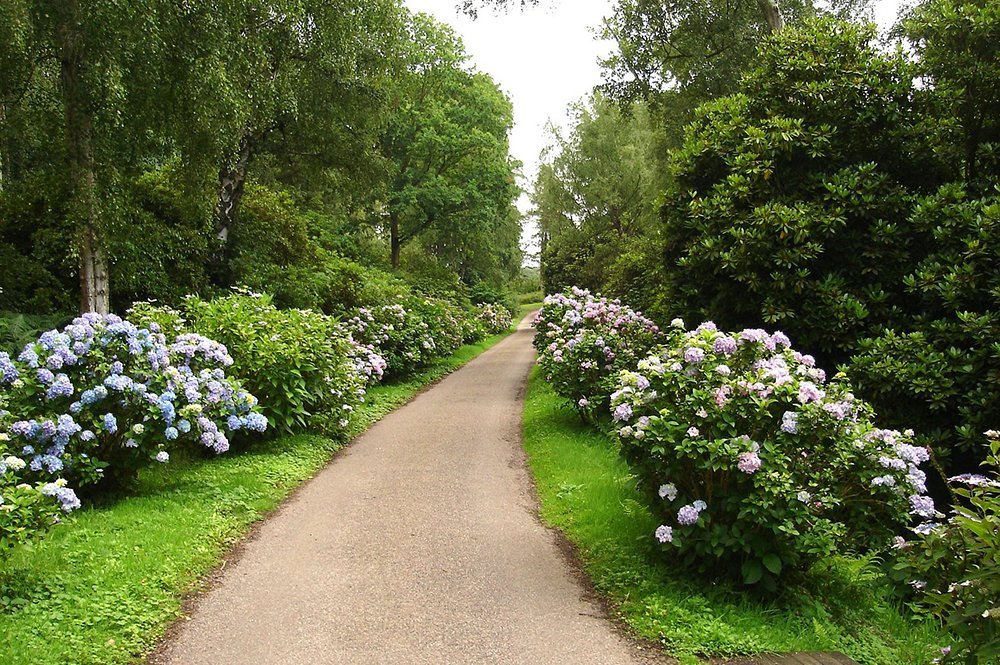 An English garden in Norfolk, England
An English garden in Norfolk, England
The Far East inspired this style of gardening. The central theme of Chinese Gardening was its abundance of nature with tall trees, medicinal herbs, and livestock. The Chinese often criticized the Europeans for planting trees in straight lines. They planted trees in unpredictable ways to create beautiful compositions and seek nature in its most natural form and sought all possibilities to achieve this.
Hence, the English Gardens were more natural with its not so strict geometric features. The English Landscape garden style also gave birth to the French Jardins Anglais and the Germans Englischer Garten.
Roy Porter best captured the essence of English Landscape gardens by stating that the critical enlightening concept was nature. The English gardens relied heavily on rectilinear patterns and unnatural shaping of trees. It seeks to portray the diversity of life and its capability to enthuse bold and creative ideas. The English garden was based on the principle of man coinciding with nature.
As compared to the formal French gardens, English gardens were less formal, less labor-intensive, and less expensive to maintain and design.
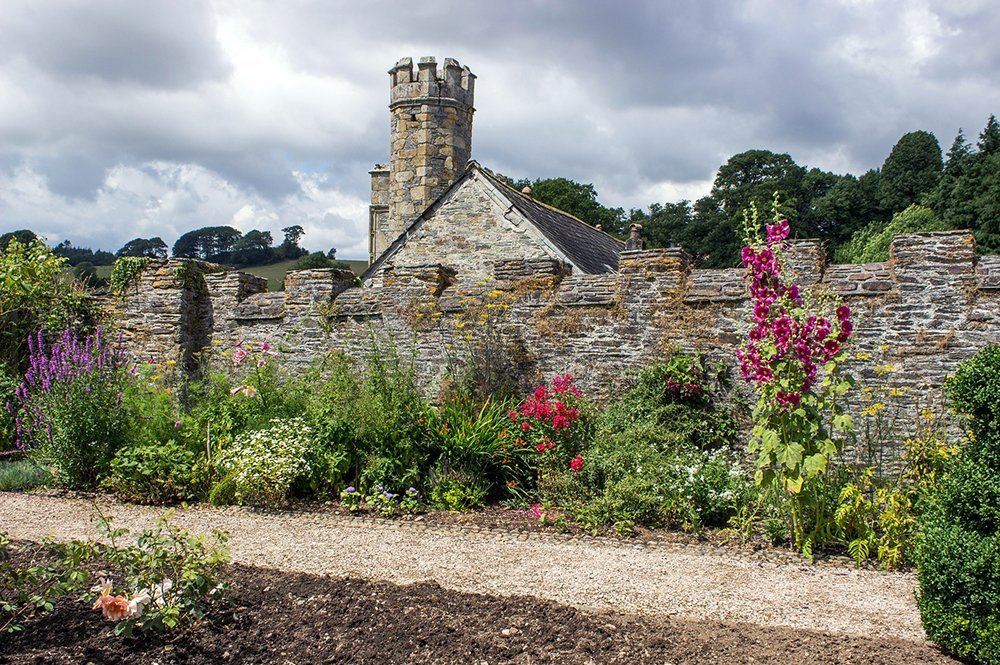 Plants and flowers of different sizes lined against a wall
Plants and flowers of different sizes lined against a wall
There were a few notable men behind the designs of English landscape gardening – William Kent and Lancelot (‘Capability’) Brown.
William Kent was an architect-turned-gardener who was eventually employed by the English royals to design gardens. In Kent’s work, one could see undulating trees between the serpentine walkways; though there were some straight walks in the garden, the irregular woodland stands out as the central part of the garden.
Lancelot “Capability” Brown worked as the assistant to William Kent before embarking on his own career as one of the most influential figures in the 18th-century landscape design. Brown would effortlessly design parks and gardens as if they grew organically out of their surroundings without human intervention or management. He often transformed yards with a belt of trees surrounding the whole estate; a random assignment of trees, serpentine walks with massive lawns and irregularly shaped lakes with an occasional bridge. An example of this type of creation can be found in Croome Court. Even after Brown’s death in 1783, his style of gardening remained influential. He was a businessperson like no other and could articulate the benefits of the form of the garden too many with ease and clarity. This is the reason why he hailed as one of the most excellent gardeners of the eighteenth century.
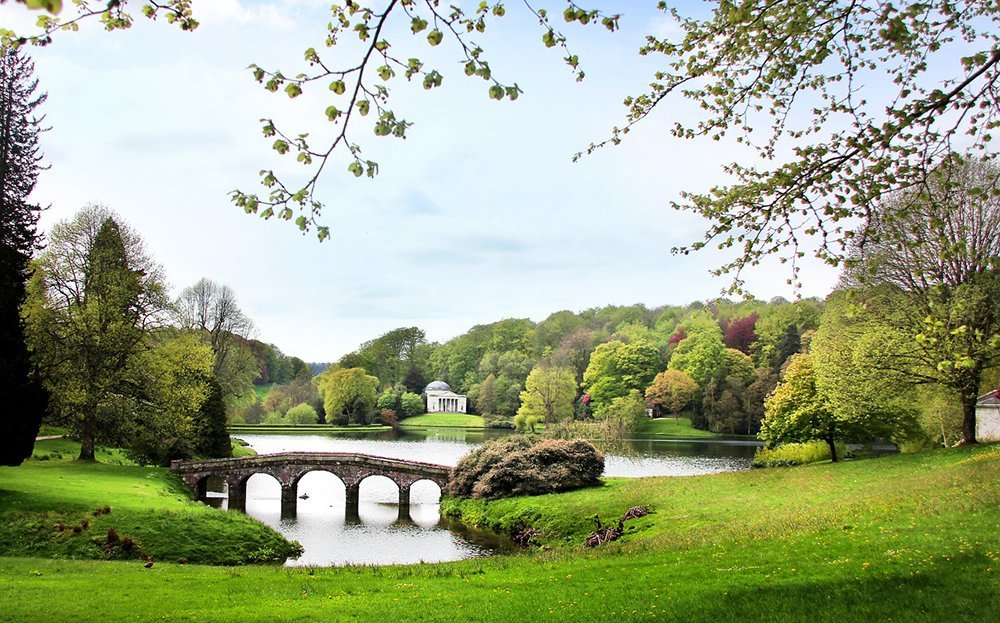 Stourhead Park in Wiltshire
Stourhead Park in Wiltshire
ABOUT US
Jonite is credited as being the first to bring the notion of “grates reinvented” to life by pioneering the world’s first reinforced decorative stone grating. We challenged the status quo of metal as the central composite in the creation of trench grate covers. Today, we are known for producing drain covers made predominantly out of natural stone. This was made possible through the embodiment of Kennedy’s famous quote through our dedicated and passionate team who has refused to abide by the idea that drain covers and gratings being limited to only having metallic properties. They chose to reject the status quo and were instead motivated towards a creative vision that has led to the creation of is known today as stone grates.
More than just a durable product, the use of stone grates in the construction of trench drain covers breathes life into dull landscapes.
Landscape architects have the freedom of working with architects to create a variety of themes and designs available within each and any of the four collections. Furthermore, Jonite offers a wide range of both standard and specific colors for clients that allow trench grate products to be adjusted to any hue or shade of clients’ choice.
The rustic appeal of natural stone provides an element of nature to otherwise lifeless images, such as a stretch of the road, where dullness is only exacerbated by the appearance of soulless looking cast iron and concrete grates situated by its side. Jonite trench grates can be crafted to suit a myriad of themes and designs that give off a sense of liveliness and uplifts its surroundings. Likewise, it provides an added level of comfort to living spaces through the aesthetic of uniquely crafted stone grates. These unique material properties even prevent rust and corrosion.










